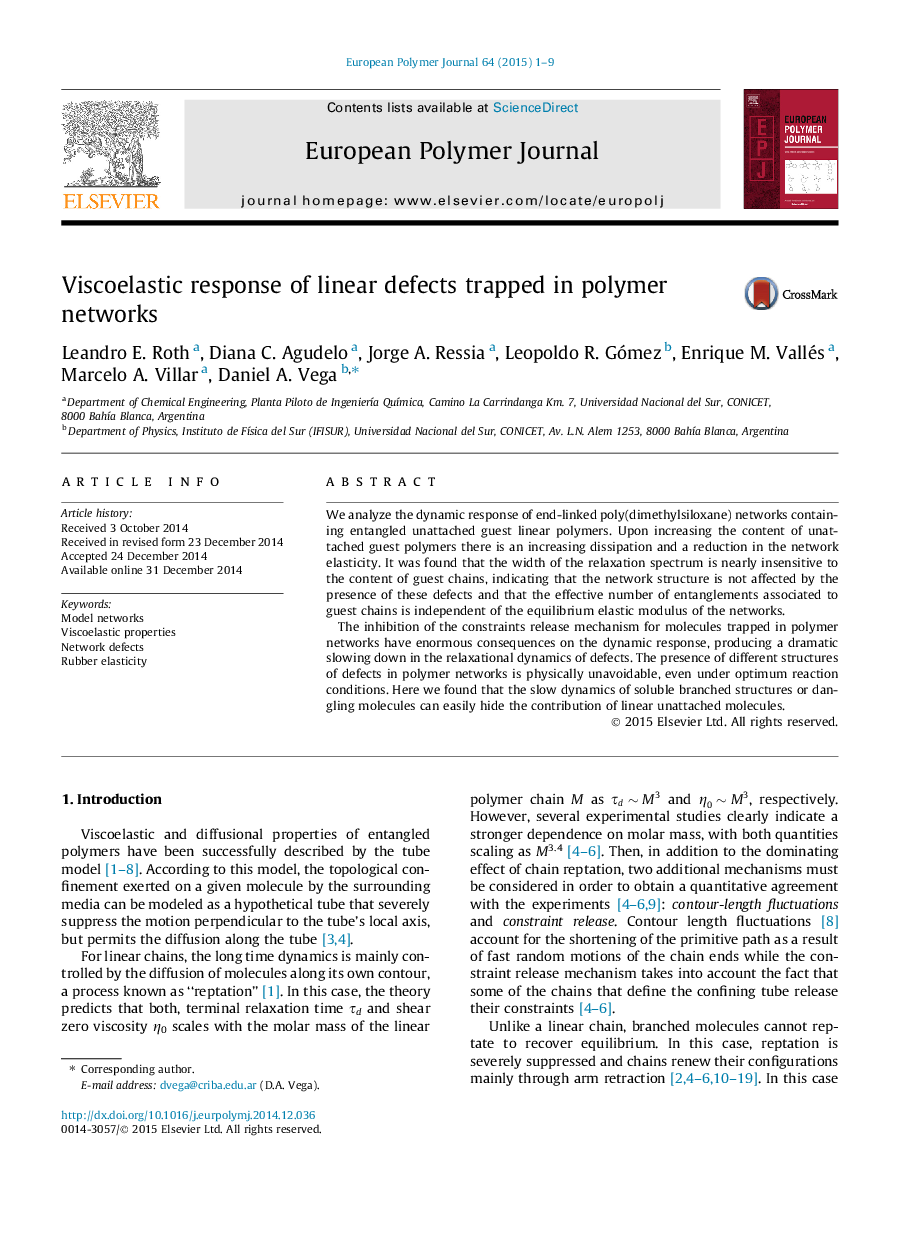| Article ID | Journal | Published Year | Pages | File Type |
|---|---|---|---|---|
| 1395268 | European Polymer Journal | 2015 | 9 Pages |
•We analyze the dynamic response of polymer networks containing guest linear polymers.•The dynamics of dangling chains can easily hide the contribution of guest molecules.•The dissipative behavior can be controlled through the addition of defects.
We analyze the dynamic response of end-linked poly(dimethylsiloxane) networks containing entangled unattached guest linear polymers. Upon increasing the content of unattached guest polymers there is an increasing dissipation and a reduction in the network elasticity. It was found that the width of the relaxation spectrum is nearly insensitive to the content of guest chains, indicating that the network structure is not affected by the presence of these defects and that the effective number of entanglements associated to guest chains is independent of the equilibrium elastic modulus of the networks.The inhibition of the constraints release mechanism for molecules trapped in polymer networks have enormous consequences on the dynamic response, producing a dramatic slowing down in the relaxational dynamics of defects. The presence of different structures of defects in polymer networks is physically unavoidable, even under optimum reaction conditions. Here we found that the slow dynamics of soluble branched structures or dangling molecules can easily hide the contribution of linear unattached molecules.
Graphical abstractFigure optionsDownload full-size imageDownload as PowerPoint slide
